T-55 AGM (2012)
 Ukraine c100 converted
Ukraine c100 converted
The best T-55 upgrade ?
The mythical T-54/55 had been around for the whole cold war, was exported to a hundred countries, and is still around in many. It is currently seen in action in Yemen, Nagorno-Karabakh, Ethopia and Sudan, but also in Ukraine, on both sides. Dirt cheap and with a basic design, which is still well balanced despite its age, the late 1940s main battle tank seems to still attract the industry's attention in matter of upgrade kits, to keep it relevant in an age of drones, data networking and improved intelligent ammunitions.The Ukrainian T-54/55

After an agreement with Ukraine, post-1990 in the new context of the Russian Federation, Ukraine was still left with a park of 700 tanks, upgraded to some level and some in storage. The latter were rapidly sold to finance the modernization of the Ukrainian Army:
Some 680 T-54s and T-55s were still in service in 1995, this went down to 149 in 2000, then 112 in 2015 plus derivatives. Number 17 plant in Lviv notably promoted the T-55MV on the world market before and after the collapse. Many were sold: Congo-Kinshasa purchased 20 T-55s ordered in 2005. Uganda purchased 60 T-55s ordered in 1994 and then 62 in 1998 and many from Bulgaria, there was a $35 m deal for 90 vehicles, meaning these were sold at 380,000 $ apiece. On the contrary, in October 2022 28 M55-S donated from Slovenia for the war.
This means that circa 130 should be still around today. Among the latest export upgrade was the T-55M8A2 Tifón 2 for Peru. This country developed its own upgrade cycle under supervision of engineer Sergio Casanave, the T-55M1 Leon 1, T-55M2A1 Leon 2, and then the Tifón. It showed to Ukrainian Kharkiv Morozov Machine Building Design Bureau the export potential of its own T55AGM kit. Morozov indeed collaborated with Casanave for the previous upgrades and was instrumental in the development of the Tifón 2, working jointly with Desarrollos Industriales Casanave de Perú (DICSA) (Casanave Industrial Developments Peru).
Conversion design
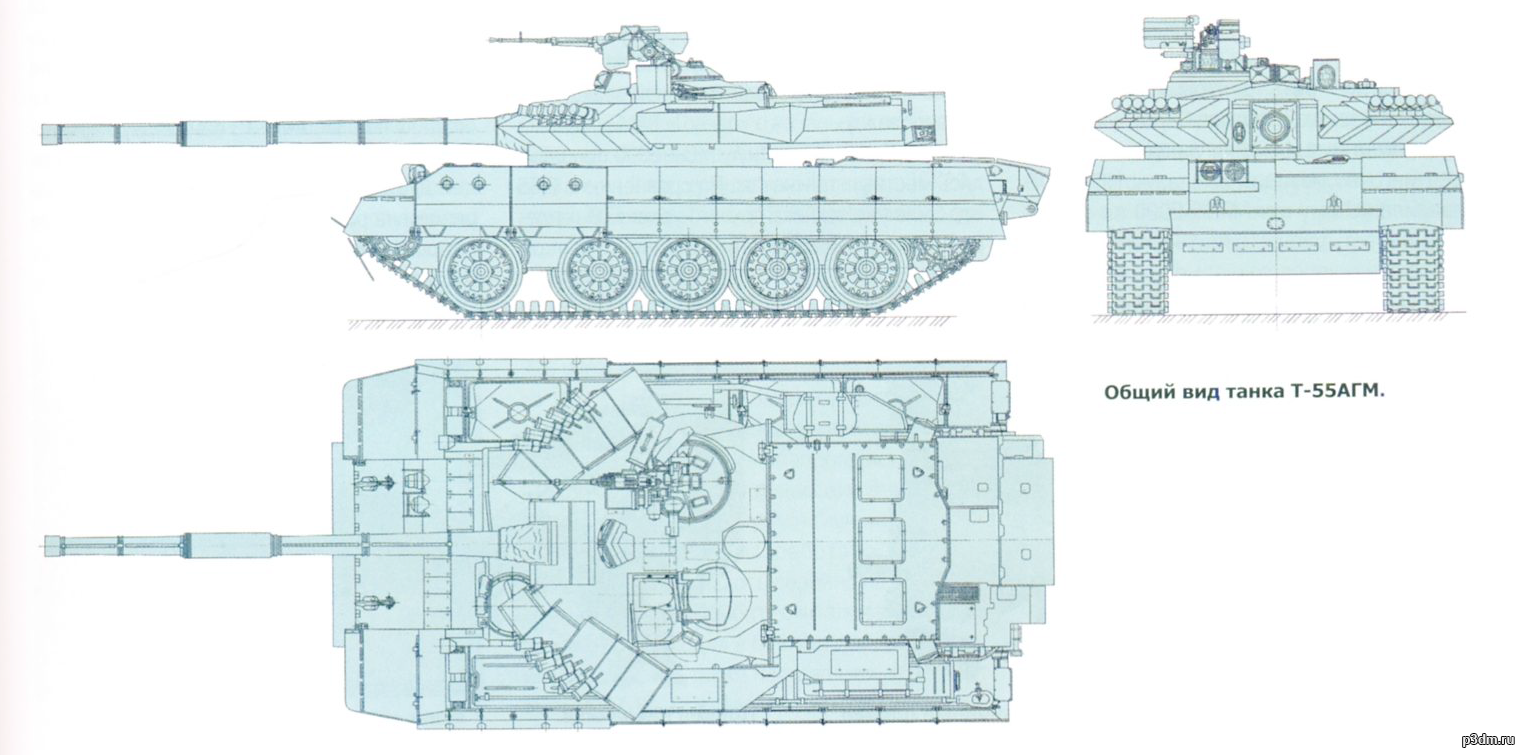
The T-55AGM is essentially an upgrade of the T55 which can be ported also on similar tanks such as the Chinese Type 59, or even to the T-62. It's a conversion to the T-80 Main Battle Tank standard, with the same level of protection, but also with an engine upgrade to compensate for the performances losses, and more active defensive countermeasures.
Engine Upgrades
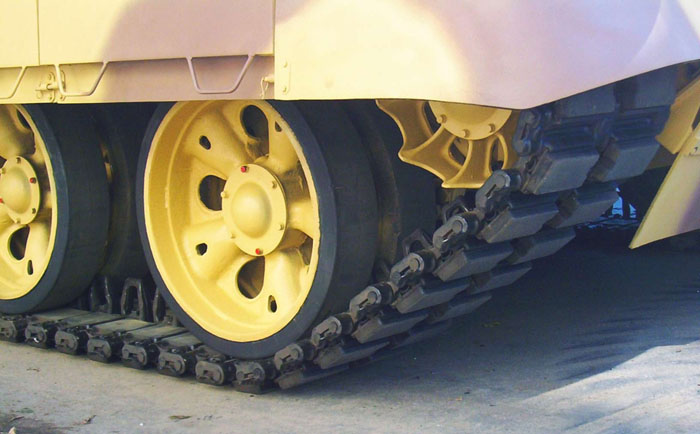
Tracks closeup
The new powerplack fitted is the Ukrainan-made 5TDFM, a two-stroke liquid-cooled multi-fuel and supercharged diesel engine. It had opposed pistons and is rated for 850 horsepower (634 kW) instead of the original late V-55 V-12 38.88 litre diesel could be pushed up to 800 horsepower (600 kW) at 2800 rpm (specific consumption ≤160+10), but reducing its useful life. The unit weighted 1,080 ton +30 loaded. The 5TDFM however coud be pushed on demand up to 1000 hp.
This new powerpack came with an improved running gear. Although the original five roadwheels on torsion bars are kept, they receive a new rubber cladding doubled with soft steel for extra damping, return rollers, while the tracks are now of a new double-pin type, and also padded for extra cushion in order to decrease tracks vibrations when cross-country. The T-55 AGM is even said to be able to reach 70 kph on road. The driver has an automated movement control system, and is given a steering handlebar control, a complete change compared to the previous lever system.
According to Morozov website (see the archives below), the Combat weight went from 36 to 48t, Power-to-weight ratio from 6.1hp/t to 17.7hp/t, and Hull length fom 6200mm to 6858mm.
Top speed according to the same site stated in 1st gear 8.5 kph, 2nd gear 15.8 kph, 3rd gear 24.9 kph, 4th gear 34.2 kph, 5th gear 47.2 kph and 6th gear, 69.3, so indeed almost 70 kph, that can have been reached in light conditions. The old T-55 had no 6th gear and was capped to 45 kph. In reverse, 6.85 kph to 30 kph thanks to the three reverse gears.
As for speed in various grounds: On natural soil road, 30 - 35 kph, on highway 50 to 70 kph. Fuel consuption on above condition went from 300 - 330 Liters/100 km down to 190 - 210 Liters, cruising range 320 to 500 km. The vehicle was able to start and run in temperatures from -40 to +55°. The T-55AGM could ford 1.8 m of water without preparation and 5m with full aparattus, Deep fording equipment. Lubrication system was the GALOL M-4042TD, 110 liters cap., with centrifugal oil filter.
The cooling system was by liquid, closed, forced and under pressure, with ejector to create cooling air flow through the radiators. The starter was electrical SG-18, using 4 storage batteries, and combining air-start and electrical-start systems. There was a backup air starter using 2 compressed air bottles with pressure (70 kgf/cm2). The Heater warm up coolant and engine oil was a self-contained torch-type model with oil dosed injection system. The coolant was certified until 130° as the oil temperature.
The crankshaft amplitude went from 1600 to 3400 rpm. The oil pressure in the operational range of crankshaft rotation speed was a minimal 1.5 kgf/cm2. The gearbox was a Mechanical planetary system with hydraulic control. It was a 7 forward, 1+3 reverse box, running on MT8p or TS3p oil. Tank movement control system allowed to turn around the braked track or to pivot.
Protection
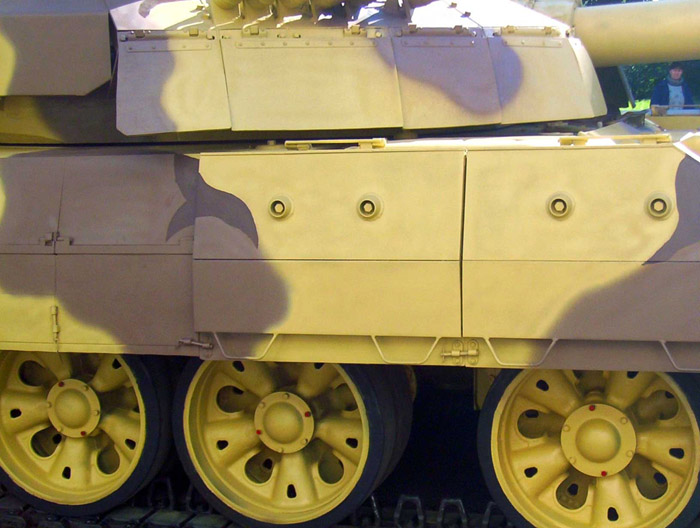
Armour panels details
The T-55AGM comprises a brand new explosive reactive (ERA) armour package, alongside active countermeasures system.
Additional protection package:
It combines both passive armour protection and explosive reactive armour (ERA). The hull nose had a removable module fitted with armoured skirting plates (similar to the Russian "knife" system, plus the sides are covered with rigid panels and rubberised skirts to defeat ATGMs. Front module sections coverse the nowe, the the turret is dotted with extra ERA boxes fillied with a combo called "Nozh". These are able to reduce a chemical energy attack by a factor of 2.3-2.6 and kinetic energy attack by a factor of 3.5-4.3. They resist up to automatic 30 mm rounds, Napalm or volumetric explosions.Thermic reduction:
Dazzle coating of external surfaces for near-infrared ranges, optical and image intensification night vision, low-level television cameras. The thermal insulation of the powerpack compartment (top deck) is setup against thermal imaging systems and homing warheads homing by thermal contrast.Smoke dischargers:
The system comprises twelve 81mm of such electrically activated (automatic), pkaced at a 12° by rows of six either sides above the forward, above ERA armour set, facing the frontal arc at different angles to cover the front of the tank with a smoke cloud c50m wide. The aerosol screen laying system is mostky used to decoy away TGMSs by detection of their semi-active laser-based homing signal and create interference to laser rangefinders, detecting laser irradiation, finding its direction for quick response (partial fire). These are 27v powered dischargers with a one second reaction time in manual, less than 0.5 sec. in automatic, and activation modes either automatic, semi-automatic, manual or in target designation mode.NBC protection system:
This Collective system for the crew and internal equipment is certified against nuclear explosions effects, radioactive, toxic and bacteriological agents. It consists of a PRKhR-M radiation and chemical agent detector and FVU filtering-and-ventilating unit. The first is using continuous checking, detection, warning and control of actuating mechanisms while the filtering-and-ventilating unit cleans outside air and supplied purified air, creating overpressure, and ventilating the crew compartment after suppressing a fire (see below).New fire suppression system:
The fire suppression system is automatic suppression system meeting modern (NATO?) requirements, detecting and suppressing fires and preventing an overheating fuel/oil mixture from exploding after detection of an high energy jet going through the crew and power pack compartments. It could activate on ventilation and remove pirolysis products. Its quick response means 0.15 s in the crew comp. and within 10 s in the engine comp. It can be activated when the vehicle mains is switched on manually when cold, by using the CR.C button or EC button depending on compartments but it needed to be activated twice before recharging.Armament
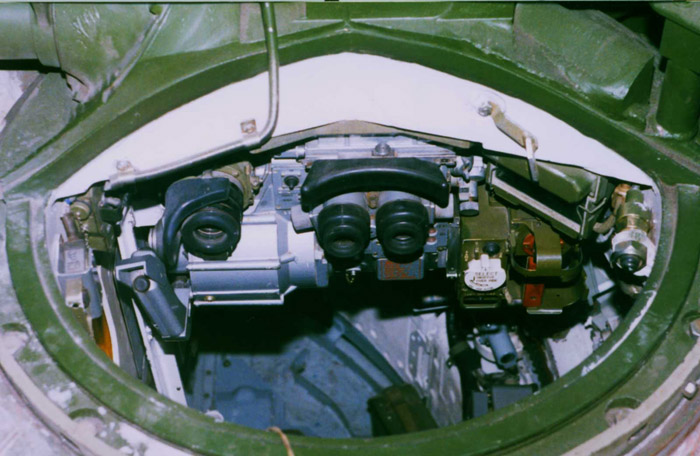
Commander's position
Closeups of the sights
Main gun
The T-55AGM comes woth two optional main guns: The 125 mm KBM1 or 120 mm KBM2 smoothbore gun with automatic loader. For safety it is located in an armoured compartment in the turret bustle, with venting system in case of cookoff. The 120 mm KBM2 is a re-designed KBM1 with new lining (down caliber) to meet NATO standard ammunition range. Conventional ammunition and barrel-launched guided missiles for ranges up to 2000-3000 m and 5,000 m with ATGM.The KBM2 weights 2600 kgs, is 50 calibres, arrangement of brakes of recoiling parts symmetrical relative to the axis of the barrel bore, one roller, firing in Automatic, semi-automatic, manual modes, APFSDS, HEAT, HE-FRAG 125 mm rounds, and 120mm NATO standards ammunitions. 30 rounds are stored, 18 in the turret bustle autloader and the rest in the turret and safe hull lockers.
The automatic loader is the main key feature of the T-55 AGM compares to the former T-55. It system fills a very long turret bustle, armoured with add-on protection boxes on the side, blow-out panels above with cookoff detection? It is electric/mechanical with digital control and able to load either 120 or 125 ammunition of any type from the automated conveyor. Outside the chain-type conveyor, a gun lock, ramming mechanism, feed tray, cartridge case stub removal mechanism, automatic loader compartment lifting mechanism and general control system. It could be used in automatic, semi-automatic or step-by-step, and emergency backup mode with a full cycle of 6-7.5 sec. depending of it.
Machine guns
It is rounded by a RWS KT-7,62 or PKT-7,62 mm coacial LMG. The Remote Weapons System is located over the commander's cupola and activated by him, on the right of the main gun. It is equipped with a KT-12,7 or NSVT-12,7 0.5-in (12.7 mm) heavy machine gun, 700 rpm, with 450 rounds in three boxes of 150 rounds. Elevation was +70°, azimuth 85°, ranges up to 2000m by day and 800 m by night. The bearing is automatic, stabilised in vertical axis control mode with the TKN-5 sight, semi-automatic with the PZU-7 sight.Fire Control System
The full fire system comprises the gunner's 1K14 day/night (mag. 10) and PTT-M thermal imaging sight with SAGEM MATIS thermal camera, commander's PNK-4S observation and sighting system, PZU-7 anti-aitcraft sight, 1Ets29M anti-aircraft machine gun control, LIO-V ballistic computer with input sensors and 2E42 armament 3-plane stabiliserThe tank is provided with an over-ride facilitiy at the commander's station, automatic loader holding 18 rounds, remotely operated anti-aircraft machine gun installed on the commander's cupola and usable against air or ground targets. Fire range is alleged to be ported to 2,400-2,600 m stationary or on the move, target detection range (night) to 8,000 m with the PTT-M thermal imaging sight. First shot preparation time 5-8 seconds day range up to 5,000 m, first probability hit 0.9 with laser range-finder, measuring target range up to 9990 m more or less 10 metres.
The gun is able to fire a guided missile at 5,000 m (target hit probability 0.8). The gunner has an over-ride mode on the move from his TKN-4S sight (range 1,700 m, magnification x7.6, night channel x5.8.) and a coaxial machine gun ranged 1,800 m. Over-ride uses the thermal imaging sight monitor for 2,400-2,600 m range and it allows to fire AA on the move from up to 2,000 m on low-flying air targets. Target detection range is 5,000 m by day, 700 m by night using TKN-4S sight and 8,000 m with the PTT-M thermal imaging sight, and far more accurate target designation than on the basic T55. Communications systems included the ultra-short wave R-173M radio set and crew intercom system.
T-55 AGM Specifications | |
| Dimensions | 9,853 x 3,56 x 3 m |
| Total weight, battle ready | 46t |
| Crew | 3 (Cdr, Gunner, Driver) |
| Propulsion | Engine 5TDFM 850 hp, Ground clearance 450 |
| Suspension | Torsion Bars |
| Speed (road) | 70 kph |
| Range | c300 km road |
| Armament | 125/120mm cannon, coax 7.62 PKT, 12.7mm NSVT RWS |
| Armor | ERA, Side skirts |
| Total conversions | c100-130 |
Gallery
Illustrations

First prototype

Later prototype for the T-55M8A2 Tifón 2
Photos
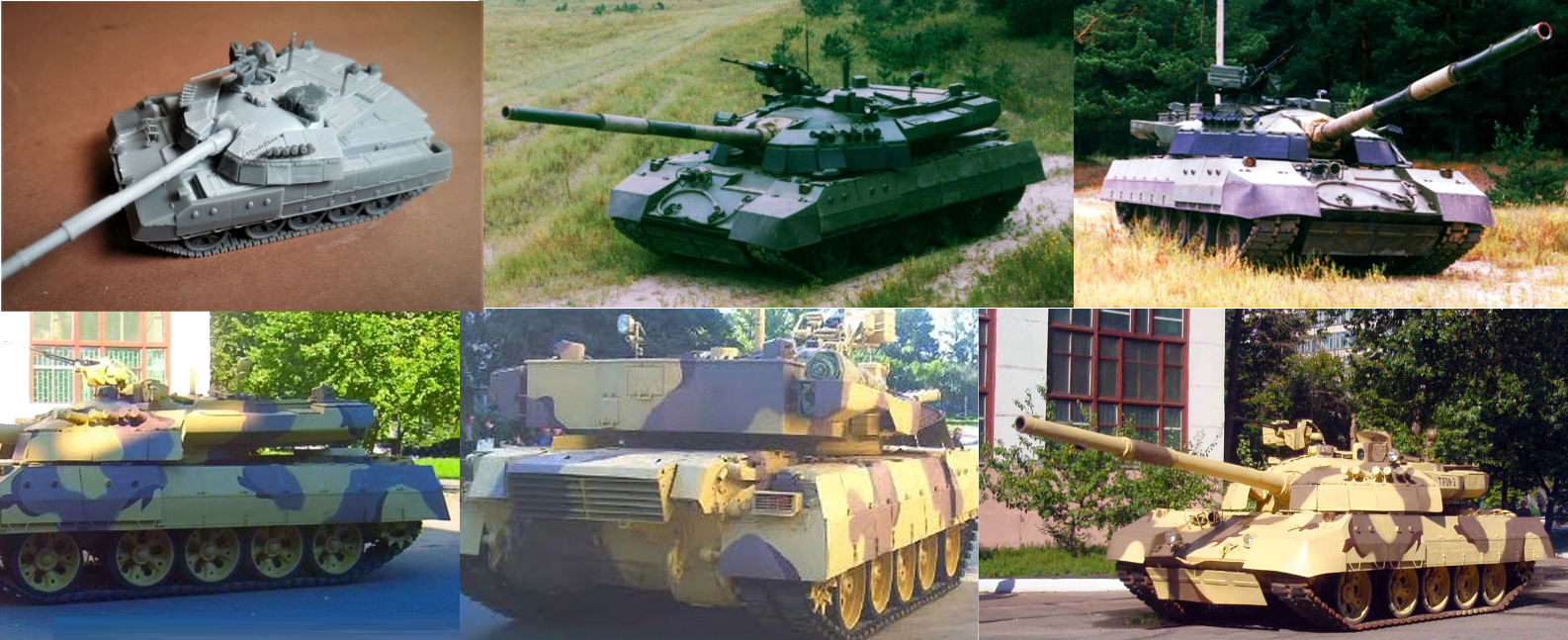
References across the board, early and late prototype
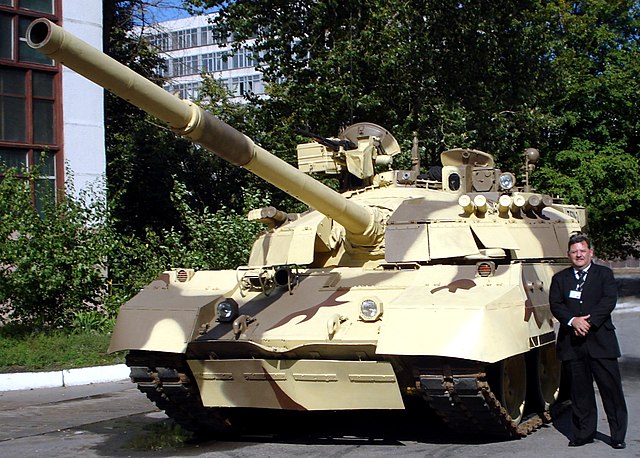
Peruvian TIFON 2
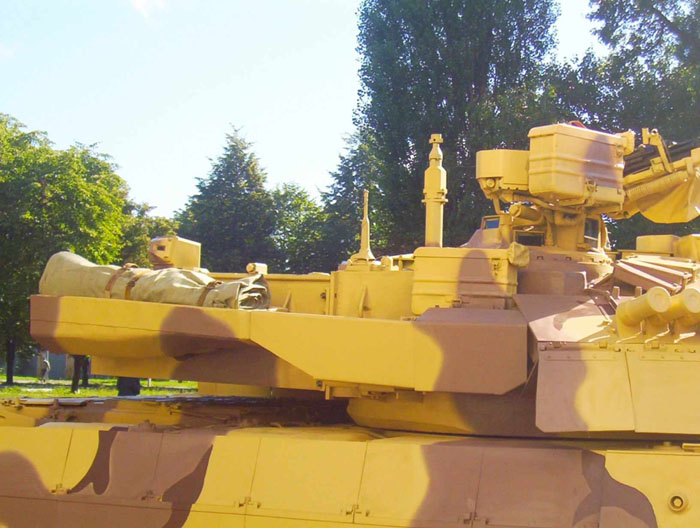
Turret design
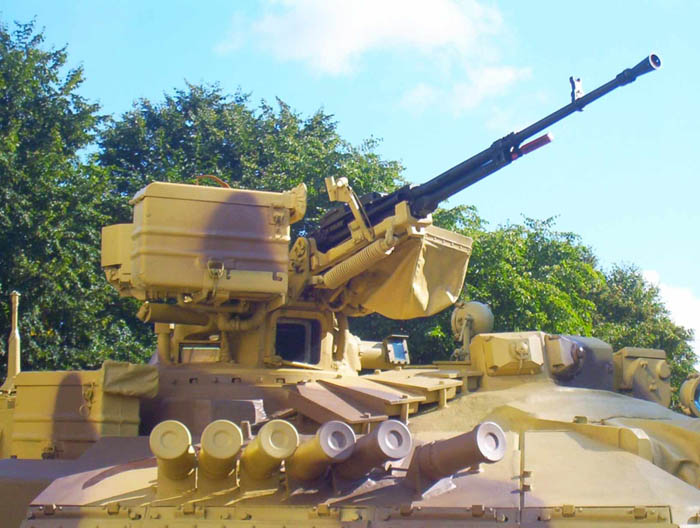
T-55 Views
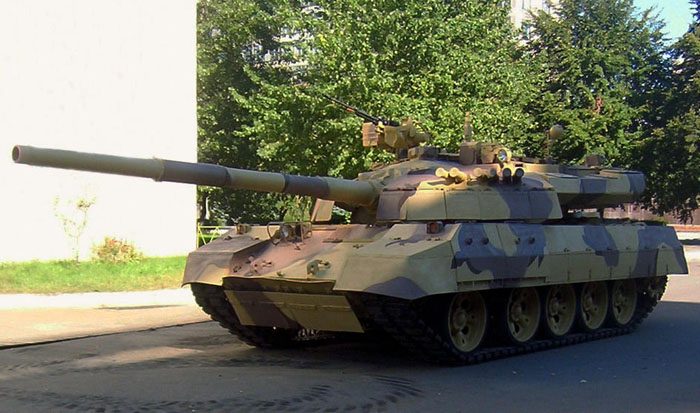
T-55 AGM prototype camouflage
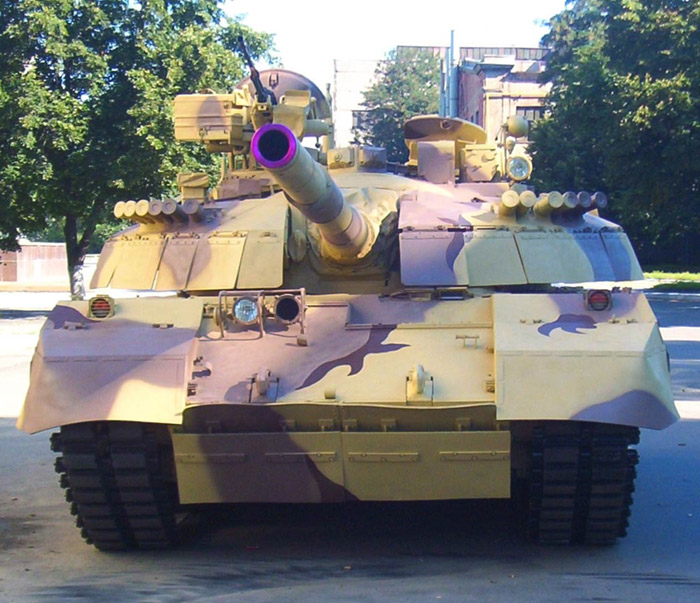
Front
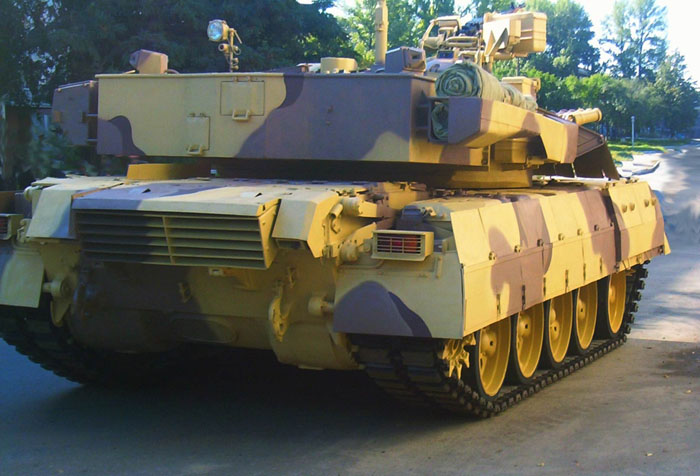
Turret bustle rear
Sources/Links
T-55AGM upgraded tank//Military and special purpose vehicles. Spetstechnoexport catalogue 2020.Михаил Лавров. Последняя реинкарнация Т-55 // "Техника и вооружение" 2016.
Tkach, Volodymyr (April–June 2015). "Powerplant system". Ukrainian Defense Review
pmulcahy.com
army-guide.com/
On en.topwar.ru
uoe.com.ua
TIFON 2
On uk.wikipedia.org
T-55 AGM wiki
web.archive.org - morozov.com.ua
On old-forum.warthunder.com
On scalemates.com
Video

Modern Tanks
Modern MBTs posters

Denel Bagder (2018)

Type 16 MCV (2016)

Gepard 1A2 last rounds 2011

SANDF

Russian AFVs

Main Battle Tanks